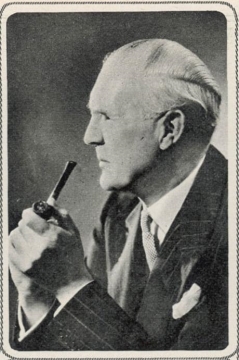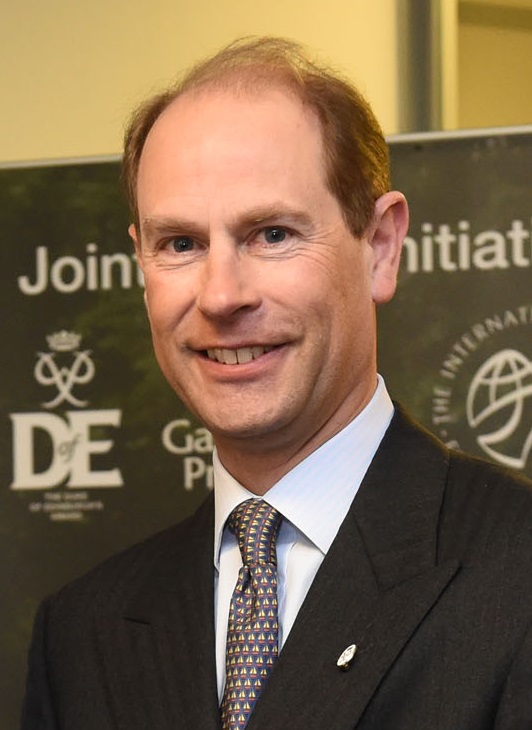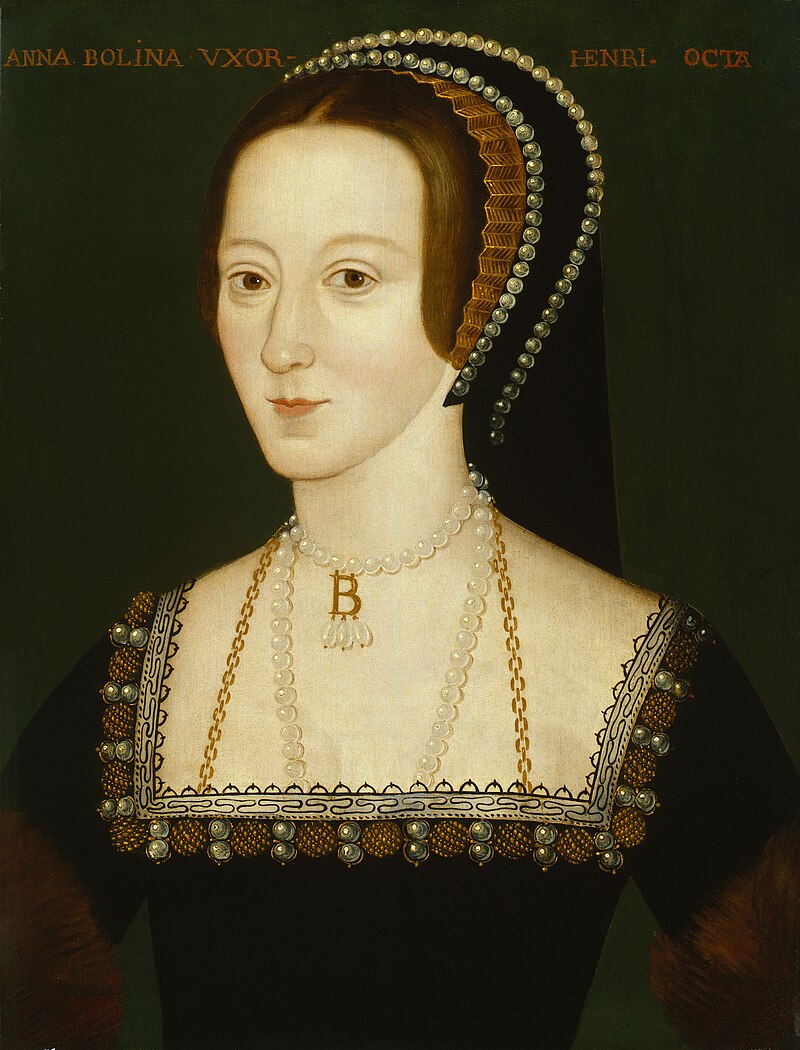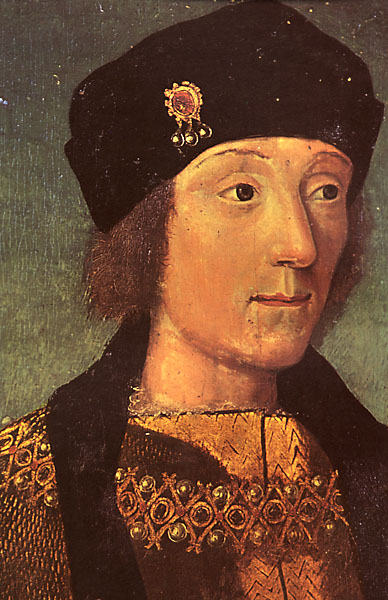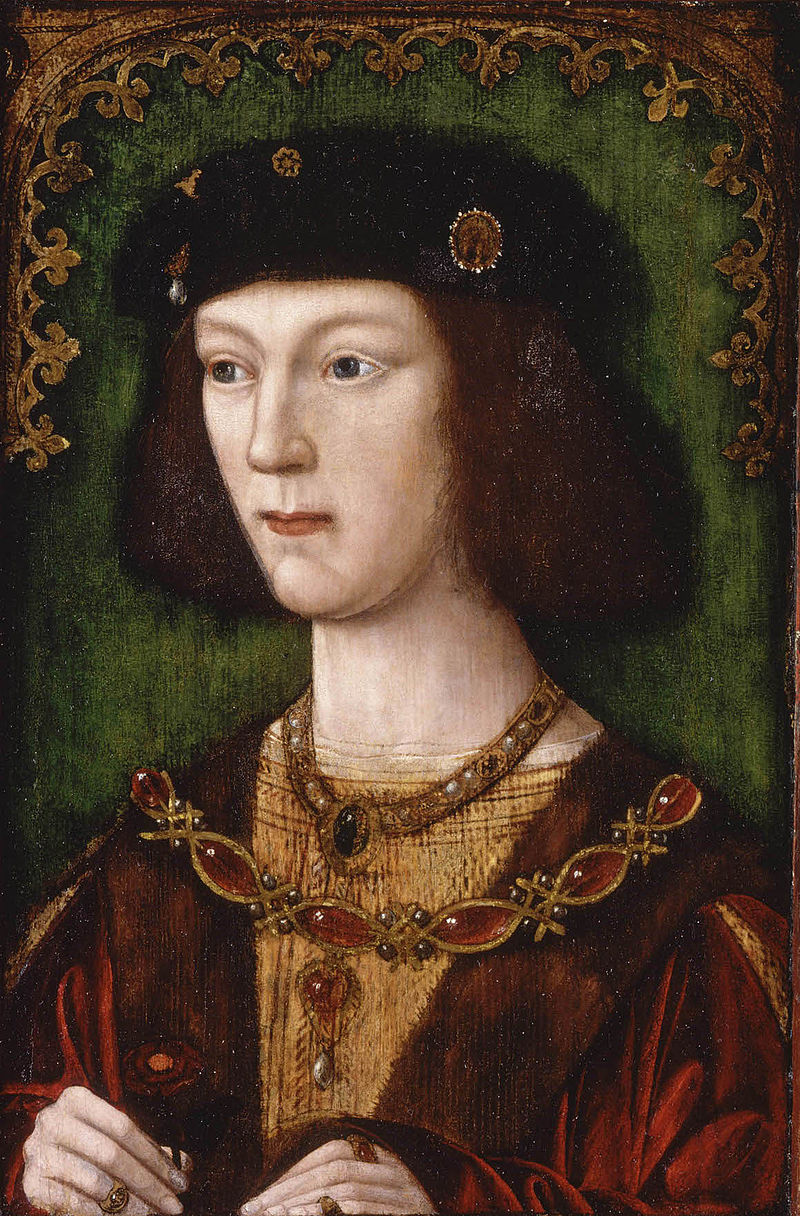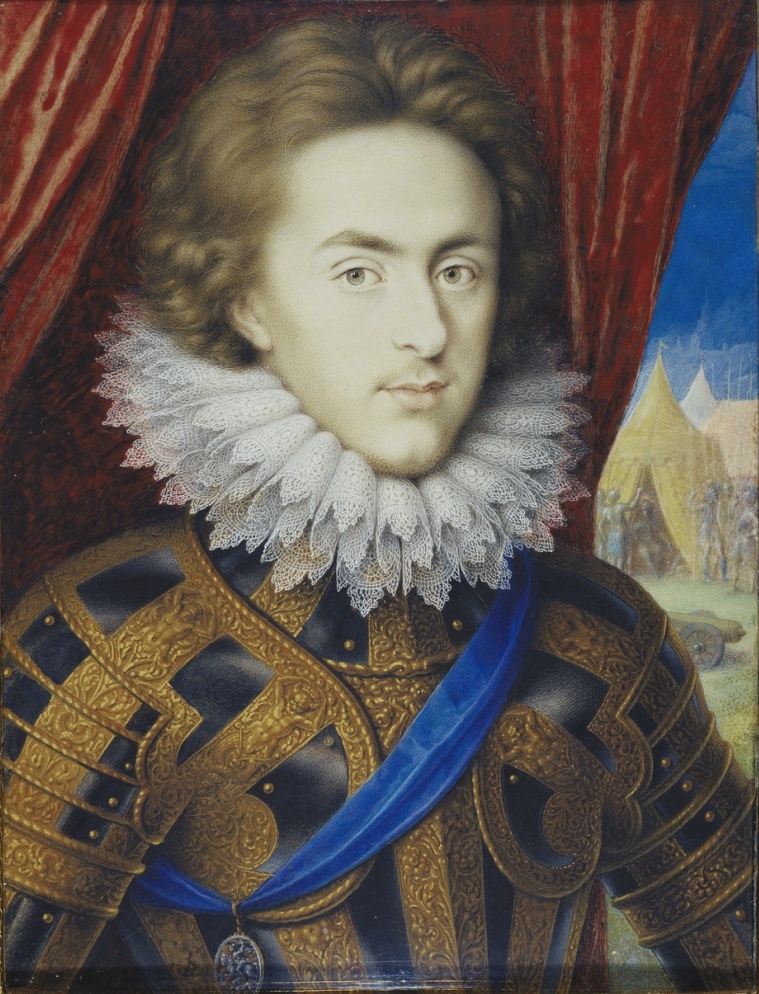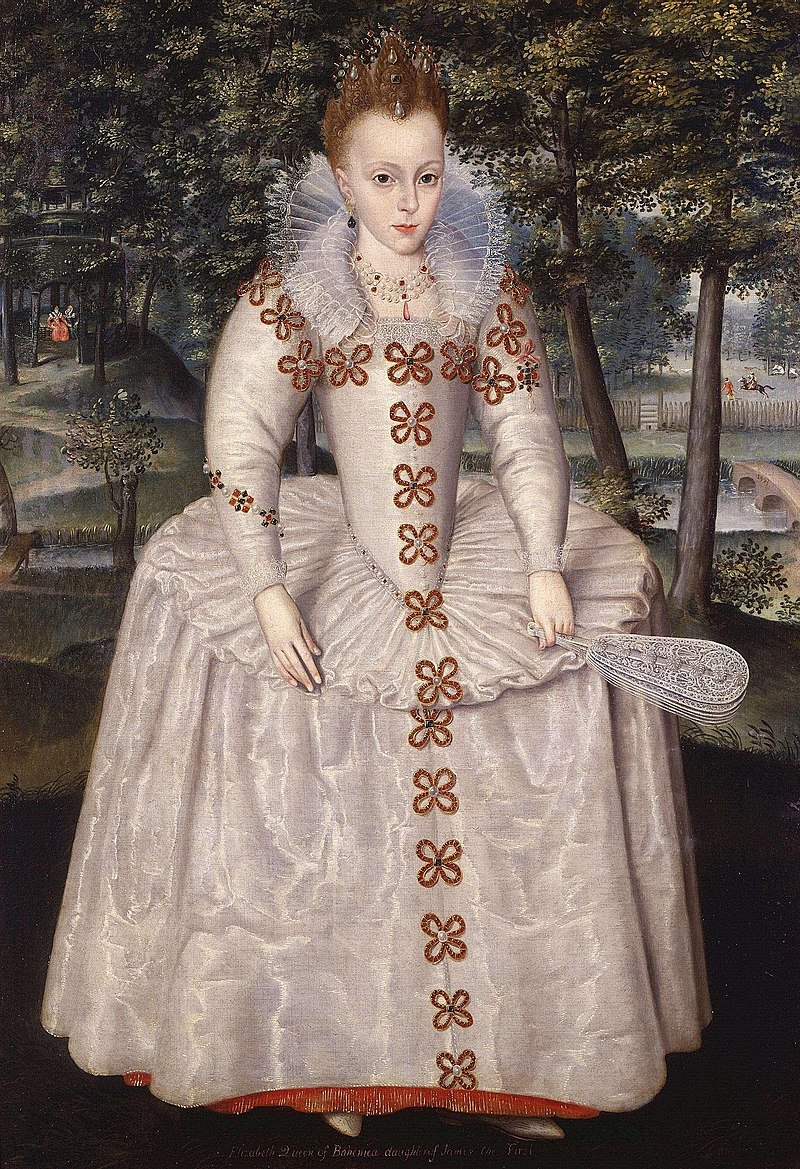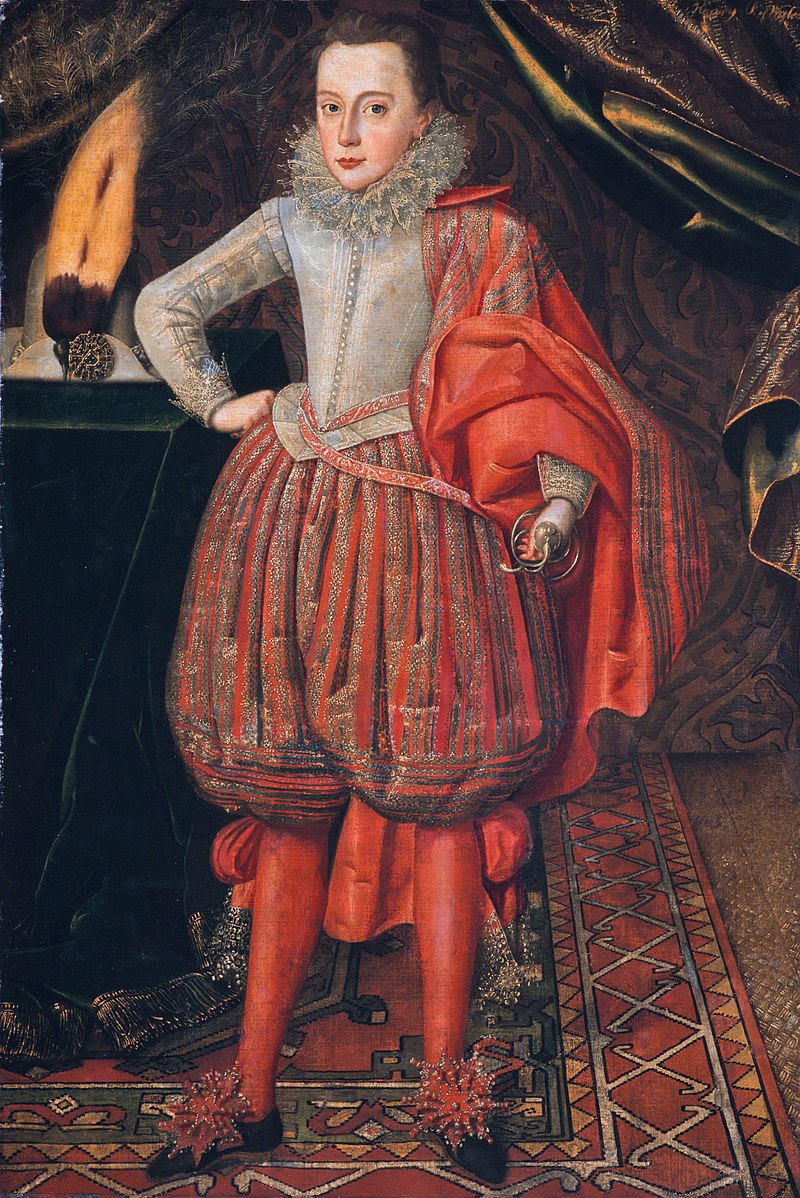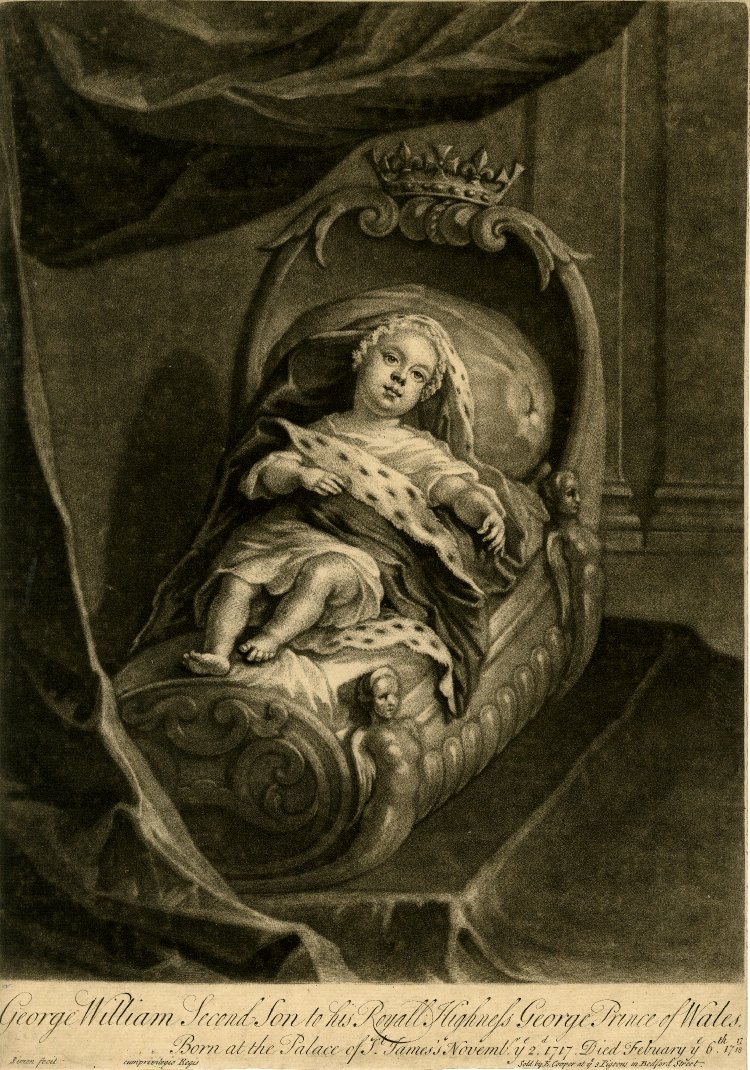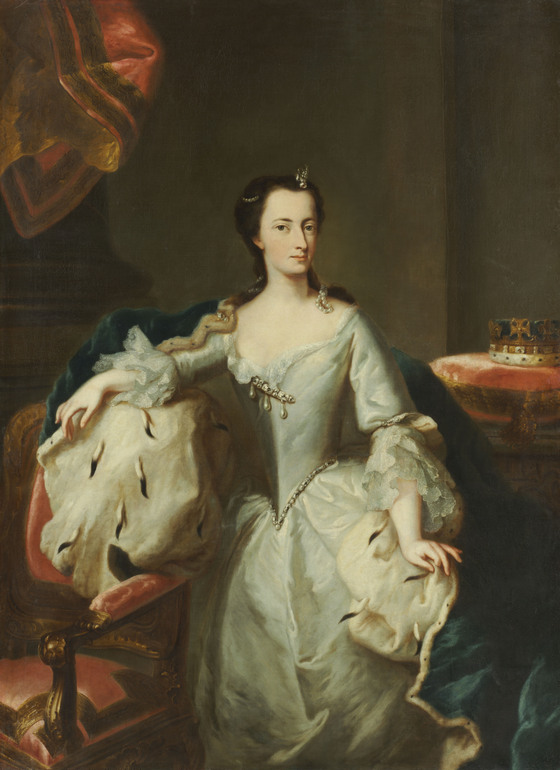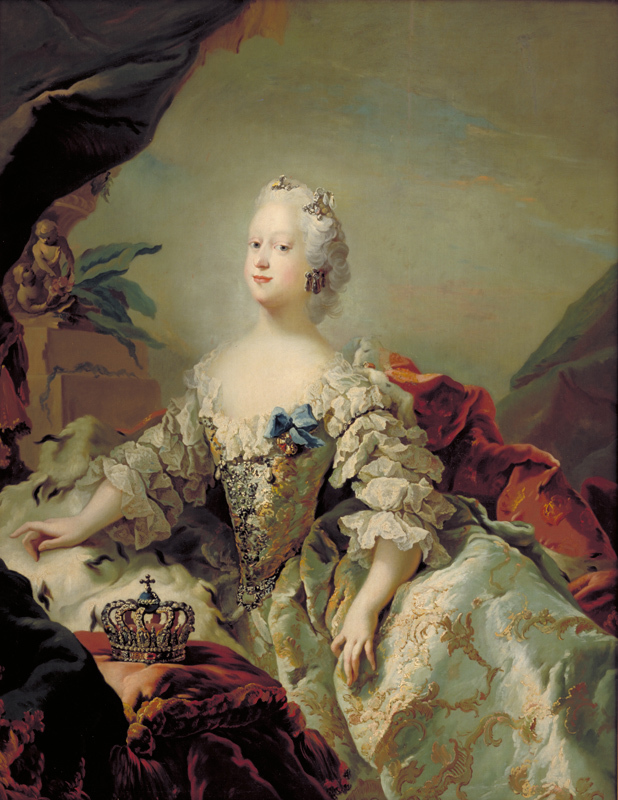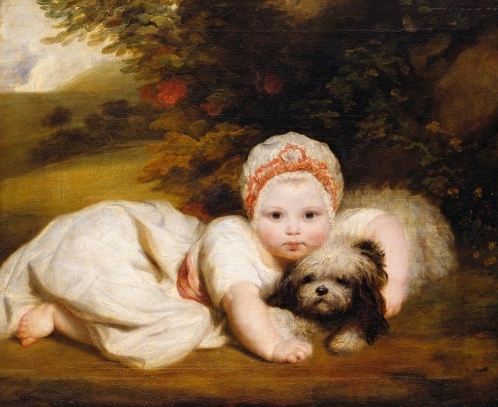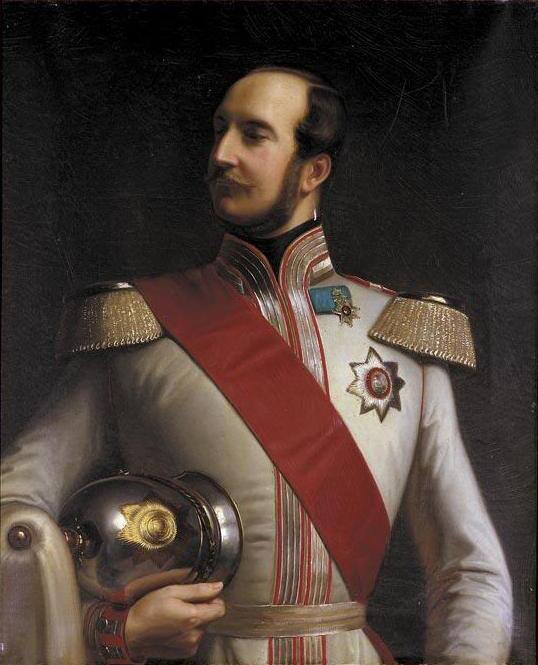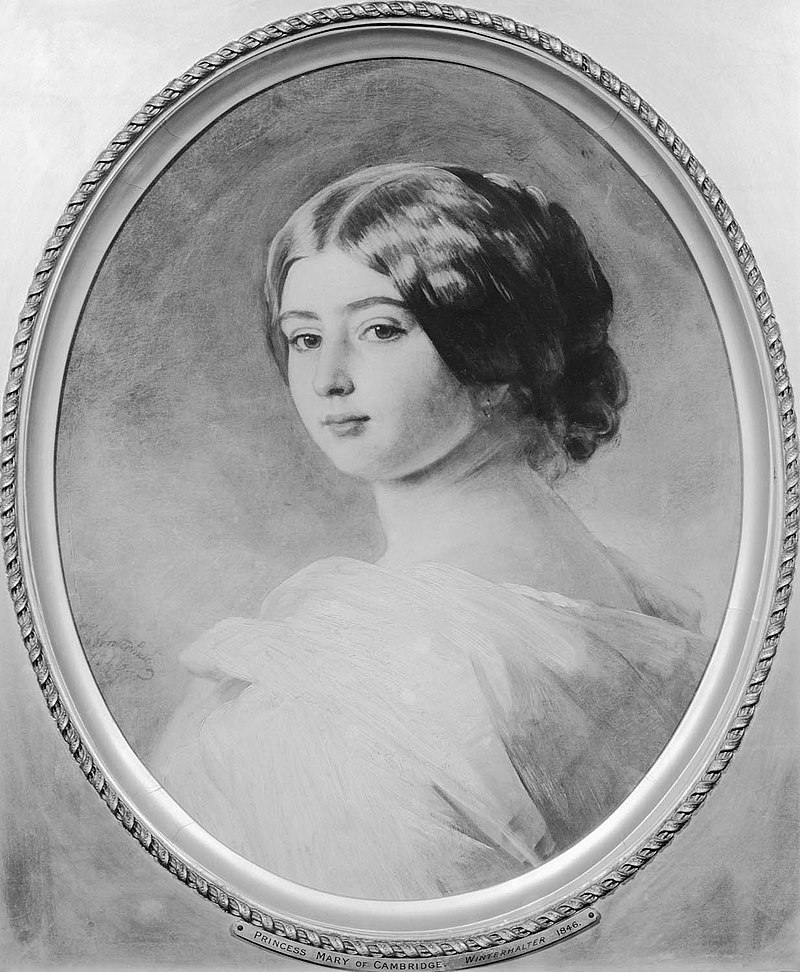by Susan Flantzer
© Unofficial Royalty 2019

Exact replica of the original royal christening gown which was commissioned by Queen Victoria and first used at the christening of her eldest child Victoria in 1841; Credit – www.rct.uk/collection
Several of the British Royal Family’s christening traditions started with the christening of Queen Victoria’s eldest child. After the birth of her first child Victoria, Princess Royal in 1840, Queen Victoria commissioned a christening gown to be made. The gown of Honiton lace lined with Spitalfields silk was made by Janet Sutherland, the daughter of a Scottish coal miner from Falkirk, who received the title Embroiderer to the Queen for her work. First worn by Victoria, Princess Royal at her christening on February 10, 1841, her parents’ first wedding anniversary, the gown was worn by 62 descendants of Queen Victoria. Lady Louise Windsor, the elder of the two children of Prince Edward, The Duke of Edinburgh and Sophie, The Duchess of Edinburgh, was the last to wear the 1841 gown at her christening in 2004. Due to the gown’s age and delicate condition, Queen Elizabeth II commissioned Angela Kelly, Dressmaker to The Queen, to make a hand-made replica in order to preserve the original. Jame Windsor, Earl of Wessex, the younger of the two children of Prince Edward, The Duke of Edinburgh and Sophie, The Duchess of Edinburgh, was the first to wear the replica gown at his christening in 2008.

The Lily Font; Credit – https://www.royalcollection.org.uk
The Lily Font is a silver baptismal font commissioned by Queen Victoria and Prince Albert in 1840 after the birth of their first child, Victoria, Princess Royal. It was first used at the christening of Victoria, Princess Royal in 1841 and has been used for royal christenings ever since except that of Princess Eugenie of York. Prince Albert helped design the font which is made from a silver gilt with the appearance of gold. Three winged cherubs sit on the base of the font above the royal arms of Queen Victoria, Prince Albert, and Victoria, Princess Royal. The cherubs are playing lyres and above them leaves reach up to support the bowl which is edged by water lilies. For the christening of Victoria, Princess Royal, the Lily Font was placed on a table as seen in the portrait below of the christening of Victoria, Princess Royal. Sometimes the Lily Font is placed into the larger 1660 Charles II font and its basin or the christening basin made in 1735 and first used at the christening of the future King George III in 1738. This can be seen below in the portrait of the christening of the future King Edward VII. The Lily Font is part of the Crown Jewels and is kept at the Jewel House at the Tower of London when not in use.
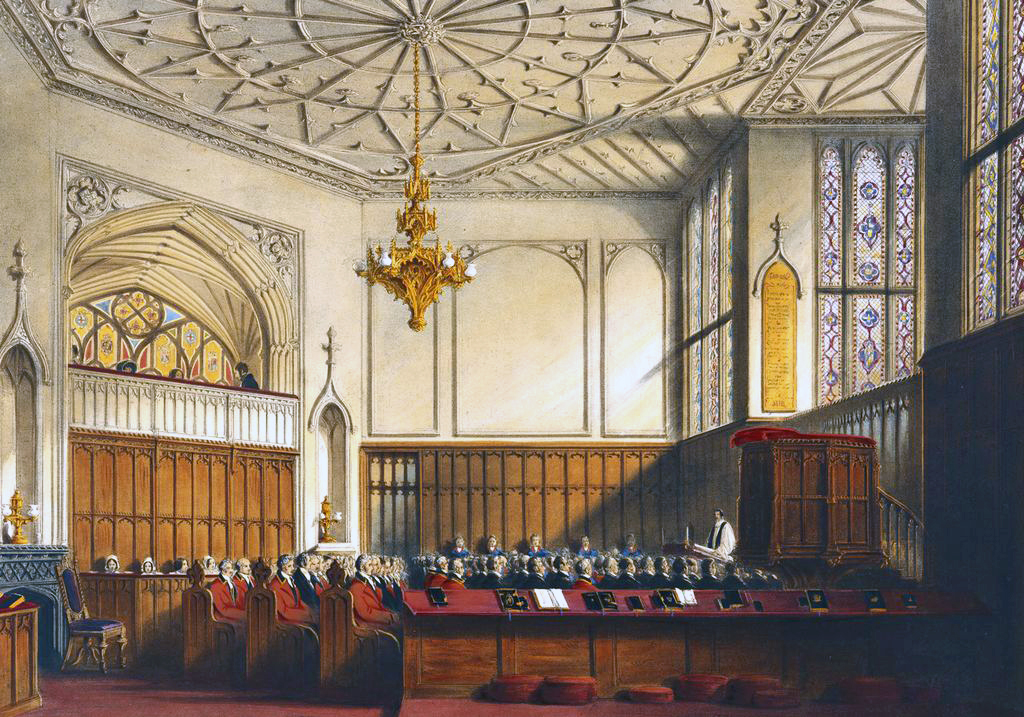
The original Private Chapel at Windsor Castle, lithograph by Joseph Nash, 1848; Credit – Wikipedia
The Private Chapel at Windsor Castle was the site for the most christenings among this group of royalty, with the Private Chapel at Buckingham Palace a close second. The Private Chapel at Windsor Castle was created for Queen Victoria by architect Edward Blore between 1840 and 1847. There were niches with marble sculptures, pews, and a large Gothic chandelier hanging from the ceiling. On November 20, 1992, a fire began in the Private Chapel at Windsor Castle when a painter left a spotlight too close to curtains. The fire caused much damage to Windsor Castle. The Private Chapel was later restored but the new Private Chapel is much smaller, has chairs instead of pews, and is only able to fit thirty people. The new altar was made by Queen Elizabeth’s nephew David Armstrong-Jones, 2nd Earl of Snowdon who is a furniture designer and maker.
Embed from Getty Images
The original Private Chapel at Buckingham Palace, circa 1910-1911
The Private Chapel at Buckingham Palace was created for Queen Victoria in 1844 in what had originally been a conservatory. On September 13, 1940, the Private Chapel was destroyed in a German bombing raid during World War II. Originally, King George VI had wanted the Private Chapel rebuilt but because of all the reconstruction needed in the country after World War II, the plan was shelved. The Queen’s Gallery was built on the site and opened to the public in 1962 to exhibit works of art from the Royal Collection. At that time, the Private Chapel was relocated to the south-eastern part of Buckingham Palace.
********************
Included below is christening information for Queen Victoria, her husband Prince Albert, their nine children, their grandchildren born British princes and princesses, and their other grandchildren christened in the United Kingdom. It is interesting to note that Queen Victoria was a godparent to many of her grandchildren. Many godparents did not attend the christening. Instead, usually, a British royal family member would serve as a proxy. Please note that not all of the photos below are christening photos.
Queen Victoria

Victoria with her mother; Credit – Wikipedia
********************
Prince Albert of Saxe-Coburg and Gotha, Prince Consort

Albert on the left with his mother and elder brother Ernst; Credit – Wikipedia
********************
Victoria, Princess Royal, German Empress and Queen of Prussia
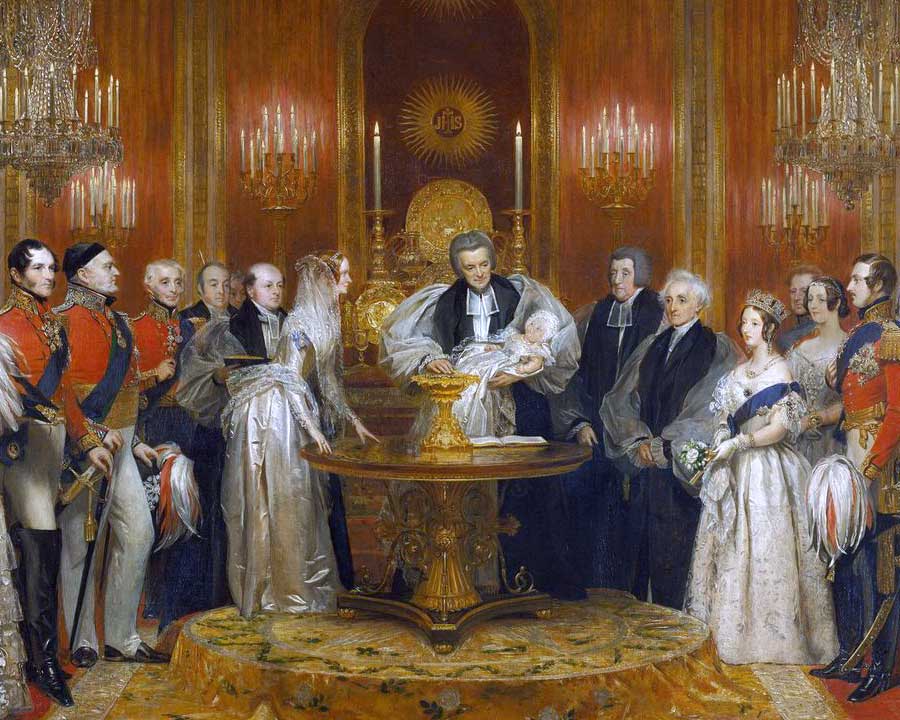
Christening of Victoria, Princess Royal in the Throne Room at Buckingham Palace in 1841; Credit – Wikipedia
(All of the children of Victoria, Princess Royal were born and christened in Prussia.)
********************
King Edward VII, born Albert Edward, Prince of Wales

The christening of Queen Victoria’s eldest son Albert Edward, Prince of Wales in 1842; Credit – Wikipedia
(All the children of Edward VII were born British princes and princesses. Their christening information is listed below.)
********************
Prince Albert Victor, Duke of Clarence, born Prince Albert Victor of Wales, known as Prince Eddy

Prince Eddy with his mother and father; Credit – Wikipedia
********************
King George V, born Prince George of Wales

The Princess of Wales holding Prince George who is wearing the christening gown; Credit – http://glucksburg.blogspot.com/
********************
Princess Louise, Princess Royal, Duchess of Fife, born Princess Louise of Wales
- Unofficial Royalty: Princess Louise, Princess Royal, Duchess of Fife
- Parents: The Prince and Princess of Wales, later King Edward VII and Queen Alexandra (born Princess Alexandra of Denmark)
- Born: February 20, 1867, at Marlborough House in London, England
- Christened: May 10, 1867, at Marlborough House in London, England
- Names: Louise Victoria Alexandra Dagmar
- Godparents:
- Princess Ludwig of Hesse and by Rhine (her paternal aunt, born Princess Alice of the United Kingdom)
- Princess Christian of Schleswig-Holstein (her paternal aunt, born Princess Helena of the United Kingdom)
- Princess Louise of the United Kingdom (her paternal aunt)
- Crown Prince Friedrich of Prussia (her paternal uncle by marriage, the future Friedrick III, German Emperor and King of Prussia)
- Grand Duchess Augusta of Mecklenburg-Strelitz (her first cousin twice removed, born Princess Augusta of Cambridge)
- Friedrich Wilhelm, Landgrave of Hesse-Kassel (her maternal great-uncle)
- Queen Louise of Denmark (her maternal grandmother, born Louise of Hesse-Kassel)
- King George I of Greece (her maternal uncle, born Prince Vilhelm of Denmark)
- Maria Feodorovna, Tsarevna of Russia (her maternal aunt, born Princess Dagmar of Denmark)
- Duke Charles of Schleswig-Holstein-Sonderburg-Glücksburg
- Prince Edward of Saxe-Weimar-Eisenach
********************
Princess Victoria of the United Kingdom, born Princess Victoria of Wales

Alexandra, Princess of Wales; Princess Victoria of Wales by W. & D. Downey, albumen carte-de-visite, Autumn 1868, NPG x3602 © National Portrait Gallery, London
- Unofficial Royalty: Princess Victoria of the United Kingdom
- Parents: The Prince and Princess of Wales, later King Edward VII and Queen Alexandra (born Princess Alexandra of Denmark)
- Born: July 6, 1868, at Marlborough House in London, England
- Christened: August 6, 1868, at Marlborough House in London, England
- Names: Victoria Alexandra Olga Mary
- Godparents:
- Queen Victoria (her paternal grandmother)
- Alexander II, Emperor of All Russia
- Tsarevich Alexander Alexandrovich of Russia (her maternal uncle by marriage, the future Alexander III, Emperor of All Russia)
- Prince Ludwig of Hesse and by Rhine (her paternal uncle by marriage, the future Grand Duke Ludwig IV of Hesse-Darmstadt)
- Prince George of Hesse-Kassel
- Queen Olga of Greece (her maternal aunt by marriage, born Grand Duchess Olga Konstantinovna of Russia )
- Caroline Amalie, Dowager Queen of Denmark (born Caroline Amalie of Schleswig-Holstein-Sonderburg-Augustenburg)
- Marie, Dowager Duchess of Mecklenburg-Strelitz, (born Marie of Hesse-Kassel)
- Princess Mary Adelaide of Cambridge, Duchess of Teck (her first cousin twice removed)
- Princess Frederick of Anhalt (her maternal great-aunt, born Marie Luise Charlotte of Hesse-Kassel)
********************
Princess Maud of Wales, Queen of Norway
- Unofficial Royalty: Princess Maud of Wales, Queen of Norway
- Parents: The Prince and Princess of Wales, later King Edward VII and Queen Alexandra (born Princess Alexandra of Denmark)
- Born: November 26, 1869, at Marlborough House in London, England
- Christened: December 24, 1869, at Marlborough House in London, England
- Names: Maud Charlotte Mary Victoria
- Godparents:
- Prince Leopold of the United Kingdom (her paternal uncle)
- Prince Friedrich Wilhelm of Hesse-Kassel (her maternal first cousin once removed)
- Count Gleichen (her paternal half-first cousin once removed, born Prince Victor of Hohenlohe-Langenburg)
- Duchess of Nassau (born Adelheid-Marie of Anhalt-Dessau, wife of the future Adolphe, Grand Duke of Luxembourg)
- King Carl XV of Sweden
- Marie, Princess of Leiningen (wife of her paternal half-first cousin once removed, born Marie of Baden)
- Maria Feodrovna, Tsarevna of Russia (her maternal aunt, born Princess Dagmar of Denmark)
- Crown Princess Louise of Denmark (her maternal aunt by marriage, wife of the future King Frederik VIII of Denmark)
- Duchess of Inverness, her great-great-aunt by marriage, born Cecilia Underwood, morganatic wife of Prince Augustus, Duke of Sussex, uncle of Queen Victoria)
********************
Prince John of Wales
- Parents: The Prince and Princess of Wales, later King Edward VII and Queen Alexandra (born Princess Alexandra of Denmark)
- Born: prematurely on April 6, 1871, at Sandringham House in Norfolk, England, died April 7, 1871
- Christened: April 6, 1871, at Sandringham House in Norfolk, England
- Names: Alexander John Charles Albert
********************
Princess Alice, Grand Duchess of Hesse and by Rhine

Painting of baby Princess Alice by Edwin Landseer, a surprise gift from Prince Albert for Queen Victoria; Credit – Wikipedia
(All of Alice’s children except for her first child Victoria were born and christened in the Grand Duchy of Hesse and by Rhine. Victoria’s christening information is listed below)
********************
Princess Victoria of Hesse and by Rhine
Embed from Getty Images
Princess Alice holding her daughter Princess Victoria
********************
Prince Alfred, Duke of Edinburgh, Duke of Saxe-Coburg and Gotha

Christening of Prince Alfred; Credit – http://www.avictorian.com
(Alfred’s children were born British princes and princesses. Their christening information is below.)
********************
Prince Alfred of Edinburgh, Hereditary Prince of Saxe-Coburg and Gotha

Alfred with his parents; Credit – Wikipedia
********************
Princess Marie of Edinburgh, Queen of Romania

1882 portrait of Marie by John Everett Millais commissioned by Queen Victoria; Credit – Wikipedia
********************
Princess Victoria Melita of Edinburgh and Saxe-Coburg and Gotha, Grand Duchess Victoria Feodorovna of Russia

Royal Family group by Alexander Bassano, half-plate glass negative, 1879, NPG x95985 © National Portrait Gallery, London (Victoria Melita on the left with her siblings)
********************
Princess Beatrice of Edinburgh and Saxe-Coburg and Gotha, Duchess of Galliera
Embed from Getty Images
- Unofficial Royalty: Princess Beatrice of Edinburgh and Saxe-Coburg and Gotha, Duchess of Galliera
- Parents: Prince Alfred, Duke of Edinburgh, later Duke of Saxe-Coburg and Gotha and Grand Duchess Maria Alexandrovna of Russia
- Born: October 29, 1875, at Eastwell Park, her parents’ home in Eastwell, Kent, England
- Christened: May 17, 1884, at Eastwell Park, her parents’ home in Eastwell, Kent, England
- Names: Beatrice Leopoldine Victoria
- Godparents:
********************
Princess Helena of the United Kingdom, Princess Christian of Schleswig-Holstein

Helena on the right with her brother Alfred; Credit – Wikipedia
(Helena’s children were born and christened in the United Kingdom. Their christening information is below.)
********************
Prince Christian Victor of Schleswig-Holstein

Prince Christian Victor of Schleswig-Holstein by Alexander Bassano, half-plate glass negative, circa 1875, NPG x95879 © National Portrait Gallery, London
********************
Prince Albert, Duke of Schleswig-Holstein

Prince Albert of Schleswig-Holstein by Alexander Bassano, half-plate collodion glass negative, circa 1875, NPG x96022 © National Portrait Gallery, London
********************
Princess Helena Victoria of Schleswig-Holstein

Princess Helena Victoria of Schleswig-Holstein by Alexander Bassano, quarter-plate glass negative, July 1879, NPG x96017 © National Portrait Gallery, London
********************
Princess Marie Louise of Schleswig-Holstein

Princess Marie Louise of Schleswig-Holstein by Alexander Bassano, quarter-plate glass negative, July 1879, NPG x96050 © National Portrait Gallery, London
********************
Princess Louise, Duchess of Argyll

Princess Louise; Credit – Wikipedia
(Louise had did not have any children.)
********************
Prince Arthur, Duke of Connaught

Arthur with his parents and Arthur Wellesley, 1st Duke of Wellington; Credit – Wikipedia
(Arthur’s children were born British princes and princesses. Their christening information is below.)
********************
Princess Margaret of Connaught, Crown Princess of Sweden

Margaret with her grandmother Queen Victoria; Credit – Wikipedia
- Unofficial Royalty: Princess Margaret of Connaught, Crown Princess of Sweden
- Parents: Prince Arthur, Duke of Connaught and Princess Louise Margaret of Prussia
- Born: January 15, 1882, at Bagshot Park, her parents’ home in Bagshot, Surrey, England
- Christened: March 11, 1882, in the Private Chapel at Windsor Castle in Windsor, England
- Names: Margaret Victoria Augusta Charlotte Norah
- Godparents:
********************
Prince Arthur of Connaught

Prince Arthur of Connaught by Alexander Bassano, albumen cabinet card, 1885, NPG x128290 © National Portrait Gallery, London
********************
Princess Patricia of Connaught, Lady Patricia Ramsay
Embed from Getty Images
Patricia on the left with her grandmother Queen Victoria and her brother Arthur
********************
Prince Leopold, Duke of Albany

Prince Leopold, Duke of Albany by John Jabez Edwin Mayall, albumen carte-de-visite, February 1861, NPG x15726 © National Portrait Gallery, London
(Leopold’s children were born a British prince and princess. Their christening information is below.)
********************
Princess Alice of Albany, Countess of Athlone

Alice with her father; Credit – Wikipedia
- Unofficial Royalty: Princess Alice of Albany, Countess of Athlone
- Parents: Prince Leopold, Duke of Albany and Princess Helena of Waldeck and Pyrmont
- Born: February 25, 1883, at Windsor Castle in Windsor, England
- Christened: March 26, 1883, in the Private Chapel at Windsor Castle in Windsor, England
- Names: Alice Mary Victoria Augusta Pauline
- Godparents:
- Queen Victoria (her paternal grandmother)
- The German Empress (wife of Wilhelm I, German Emperor, born Augusta of Saxe-Weimar-Eisenach)
- Willem III, King of the Netherlands (her maternal uncle by marriage)
- Ludwig IV, Grand Duke of Hesse and by Rhine (her paternal uncle by marriage, widower of her aunt Alice for whom she was named)
- Princess of Waldeck-Pyrmont (her maternal grandmother, born Helena of Nassau)
- The Prince of Wales (her paternal uncle, the future King Edward VII)
- Crown Princess Victoria of Prussia (her paternal aunt, born Victoria, Princess Royal)
- Prince Wilhelm of Württemberg (her maternal uncle by marriage, the future King Wilhelm II of Württemberg)
- Hereditary Princess of Bentheim and Steinfurt (her maternal aunt, born Pauline of Waldeck and Pyrmont)
- Duchess of Cambridge (her great-great-aunt by marriage, born Augusta of Hesse-Kassel)
********************
Charles Edward, Duke of Saxe-Coburg and Gotha

Princess Helen, Duchess of Albany; Prince Charles Edward, 2nd Duke of Albany and Duke of Saxe-Coburg and Gotha by Byrne & Co, albumen cabinet card, December 1884, NPG x76776 © National Portrait Gallery, London
- Unofficial Royalty: Charles Edward, Duke of Saxe-Coburg and Gotha
- Parents: Prince Leopold, Duke of Albany and Princess Helena of Waldeck and Pyrmont
- Born: July 19, 1884, at Claremont House near Esher, Surrey, England, three months after the death of his father due to hemophilia complications
- Christened: privately due to illness August 4, 1884, at Claremont House near Esher, Surrey, England; publicly on December 4, 1884, at Christ Church in Esher, Surrey, England
- Names: Leopold Charles Edward George Albert
- Godparents:
********************
Princess Beatrice, Princess Henry of Battenberg
(Beatrice’s children were born and christened in the United Kingdom. Their christening information is below.)
********************
Alexander Mountbatten, 1st Marquess of Carisbrooke, born Prince Alexander of Battenberg

Princess Beatrice; Alexander Albert Mountbatten, 1st Marquess of Carisbrooke by W. & D. Downey, albumen cabinet card, circa 1890 NPG Ax5554 © National Portrait Gallery, London
********************
Princess Victoria Eugenie of Battenberg, Queen of Spain

Princess Victoria of Prussia holding her cousin Princess Victoria Eugenie of Battenberg by Alexander Bassano, half-plate glass negative, 1888, NPG x95917 © National Portrait Gallery, London
********************
Lord Leopold Mountbatten, born Prince Leopold of Battenberg
Embed from Getty Images
Leopold on the left with his sister Victoria Eugenie and his brother Alexander
********************
Prince Maurice of Battenberg

The Baptism of Prince Maurice of Battenberg by George Ogilvy Reid; Credit – The National Galleries of Scotland
********************
This article is the intellectual property of Unofficial Royalty and is NOT TO BE COPIED, EDITED, OR POSTED IN ANY FORM ON ANOTHER WEBSITE under any circumstances. It is permissible to use a link that directs to Unofficial Royalty.




